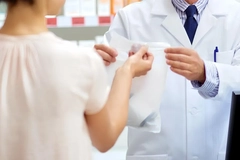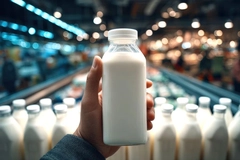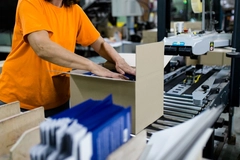“Materials and Sustainability: Building a Circular Future”: New book investigates past and future of packaging circularity
15 Apr 2024 --- After almost five years of planning and research, environmental consultancy expert Paul Foulkes-Arellano and material sciences specialist Dr. Julia Freer Goldstein have published a new book on how industries like packaging have become so toxic to human and environmental health and how businesses can forge a profitable path away from harmful practices.
In an exclusive interview with Foulkes-Arellano, we discuss their findings on a broad range of issues, including supply chains, product design, the future of plastics, legislative reform and contrasting perspectives among industry stakeholders.
The book comes shortly ahead of the UN’s fourth International Negotiating Committee (INC-4) for a Global Plastics Treaty, which will be held in Ottawa, Canada (April 23-29).
One of the book’s major themes is the idea of an “ideal plastic” — one that could replace fossil-based polymers and help circularize the global economy.
Why have you and Dr. Goldstein decided to write this book?
Foulkes-Arellano: I read Julia’s 2019 book “Material Value” as soon as I set up Circuthon Consulting in Spring 2020. It was a revelation — a book that covered materials, toxics and sustainability, and importantly, with a commercial lens. I used the book as training material with clients and suggested to Julia that a second book would soon be needed to cover the rapid materials and infrastructure innovations in the 2020s.
Julia was busy with her third book and suggested we write this new book together. This joint writing approach also provided two hugely different perspectives on the subject — both in our career trajectories and where we lived in the world.
 Developing bio-based plastics is essential in propelling the circular economy, the book argues.The book covers the status of the industry’s central materials and their associated challenges. What is your most important finding for packaging material design?
Developing bio-based plastics is essential in propelling the circular economy, the book argues.The book covers the status of the industry’s central materials and their associated challenges. What is your most important finding for packaging material design?
Foulkes-Arellano: One of the clear themes of the book is that “there is no silver bullet” for packaging. We lay out the upsides and downsides of the principal materials used in packaging. We also interviewed 24 experts across the continents — often, they disagree with one another and also with our own findings.
Our conclusions are that decisions on packaging are rarely black and white, and that a multitude of complex factors need to be taken into consideration. One common theme is that every process of manufacturing packaging involves toxics to a greater or lesser extent.
Perhaps we could say that glass is the winner in this sense, as it’s the only GRAS-certified (Generally Recognized As Safe) material for food packaging. If glass can deal with its emissions and weight, then it can play a much more central role in the future — particularly if 20% of all European packaging has to be refill-ready.
You cover the idea of “the ideal plastic” — could you elaborate on this? What is the book’s most important message when it comes to plastics?
Foulkes-Arellano: The legacy packaging plastics we use now were invented more than 70-80 years ago, with no thought to creating a marine-safe recyclable polymer. Modern-day packaging plastics are from the era of telegrams, not WhatsApp, which is why they are so problematic — their passé technology isn’t fit for a global population of eight billion, as opposed to two billion when they were invented.
Methods of producing the ideal plastic would need to consider multiple potential issues, including energy use, water use, human health risks and the effect on lakes and oceans. Not only should the end product be nontoxic and bio-benign, but no step in its production should pose a health risk, and emissions should be kept as low as possible. This hypothetical ideal plastic material remains elusive. It may require decades of work or never come to fruition. Biopolymer scientists are getting closer, and biomimicry is one promising path.
The book’s overall message on fossil-fuel plastics is that they have taken a century to perfect (despite their inadequacies): We have lost a century and a half of productive biomaterials development since we abandoned early bioplastics such Parkesine and Xylonite.
We need plasticity and many of the advanced features of polymers in a whole range of packaging and coatings. But we need to focus on reuse and longevity and only fall back on recycling when all else fails — recycling ≠ circularity.
There are many expert interviews placed throughout the book — why did you choose this approach, and what advantage has it given?
Foulkes-Arellano: The expert interviews allow subject experts the opportunity to talk uncensored and unedited. They all had the opportunity to review what we’d transcribed after our interviews, and no-one asked for content to be changed. This adds an enormous amount of spontaneity to what is a densely researched book where the narrative is backed up with multiple citations.
 Regulation must break the current linear waste model, the book argues.The interviews were carried out principally in 2023 — so the concepts and opinions expressed haven’t seen the filter of time. The advantage of this approach is that much of what was shared by the interviewees has never been in print before, and some of the revelations about technology are completely new and surprising. More than anything, their future casting makes for fascinating reading (even for the authors).
Regulation must break the current linear waste model, the book argues.The interviews were carried out principally in 2023 — so the concepts and opinions expressed haven’t seen the filter of time. The advantage of this approach is that much of what was shared by the interviewees has never been in print before, and some of the revelations about technology are completely new and surprising. More than anything, their future casting makes for fascinating reading (even for the authors).
The book covers regulations and how to enforce or encourage them — what can you say about your findings here, and what industry and policymakers can learn?
Foulkes-Arellano: There are an increasing number of regulations in all jurisdictions regarding packaging and packaging materials. They are already having a significant effect on material choices, particularly when taxes are applied, but also where fines are threatened. The number of bans on the cards is also forcing through rapid change. Clearly, policymakers shouldn’t be bullied by major polluters, but that is what seems to be happening as single-use industries cling to linear working practices.
I would recommend that new standards are set and that businesses that don’t comply with the standards are fined or closed down. (I don’t see any tears over the closing down of factories making asbestos, PVC and PFAs). A new standard ISO/DIS 59004, “Circular Economy — Terminology, Principles and Guidance for Implementation,” is under development. If packaging businesses were required to be 59004-certified in the way they are 9001-, 14001- and 45001-certified, we would see rapid advances in circularity.
What’s next for you after publication — what areas do you plan to focus on researching?
Foulkes-Arellano: In our final conclusions, which are printed after the originally planned chapters, I began to explore my work on relative circularity versus absolute circularity further. Since then, I’ve been graphically mapping out a curved axis that goes from Zero Circularity to Relative Circularity to Absolute Circularity. I want to apply my theoretical model to the footwear industry (another industry that is totally influenced by materials choices).
I have already started work on that book, provisionally titled “Cleaning Up Footwear: A Bright New Paradigm.” The fieldwork of factory visits and lab visits will commence in 2024. A key focus will be biotechnology as a route to circularity, which we also discuss in “Materials and Sustainability.”
Co-writing a book with an experienced author has educated me enormously. This is my first book and the fourth book for Julia Freer Goldstein. For two years, Julia and I communicated via video call every two weeks. We debated hundreds of issues and shared what we learned from our latest interviews, factory visits and lab visits.
We were able to take our initial hypotheses in completely different directions as the evidence fell into place. And once we’d received feedback from our expert beta readers, we reshaped the book all over again. There was zero linearity in our approach to delving into some of the biggest decisions the manufacturing industry will ever make.
Materials and Sustainability: Building a Circular Future is published by Routledge and is available on Amazon, Waterstones, Taylor & Francis and other retailers.
By Louis Gore-Langton












